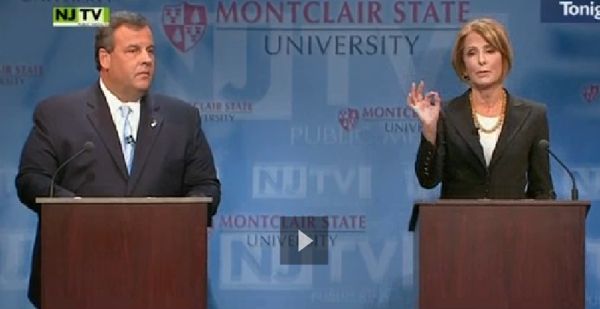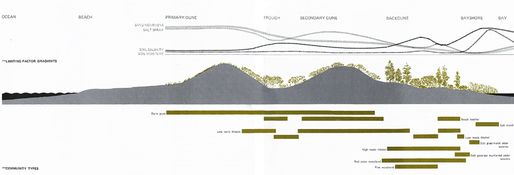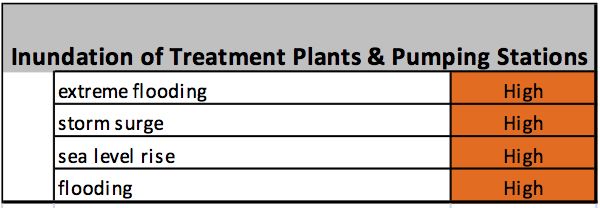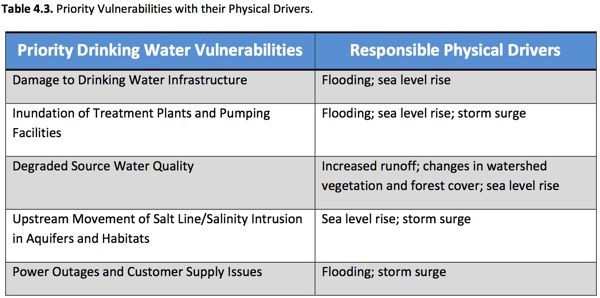Or Will Political Pressure and Memorandum of Agreement Buy Commission’s Approval?
A clear conscience, defense of the Pinelands and the public interest are more valuable than a seat on the Pinelands Commission
What I’d like to see … is that we get an independent expert to give us their take on this project. ~~~ Pinelands Commissioner
I think it is a very dangerous precedent to set to start allowing people who are clearly not impartial to come in here and represent something to you as science that is in fact opinion. Then you end up with dueling experts. And this is not the forum for that…. Then we’d have to go out an get an academic or consultant. ~~~ Pinelands Counselor Roth
But I would never say that when the real public was here. ~~~ Executive Director Wittenberg
[Update below]
The Pinelands Commission held their regular monthly meeting today and the room again was packed by opponents of the proposed South Jersey Gas Pipeline, despite the fact that again the project was not on the agenda.
Following Chairman Lohbauer’s direction to staff on October 11 to draft a Memorandum of Agreement (MOA) with the Board of Public Utilities (BPU) for the Commission’s consideration, the project seems to have fallen into a black hole.
Despite the fact that negotiations with SJG are ongoing behind closed doors, there is no overall project schedule, clear review procedures, or technical standards that apply to what must be in a MOA to demonstrate “an equivalent level of protection” of Pinelands resources.
About 25 opponents testified in opposition to the project and implored Commissioners to do the right thing and show some respect for public opinion and those opposing the project.
At times the hearing got heated and personal, with the Executive Director and Counselor coming under strong criticism from several members of the public. Here are some of the highlights, with analysis:
I) Sprint Cell Tower Plan Approval Draws Predictable Criticism
Chairman Lohbauer began the meeting on a positive note, breaking the prior silence on the SJG project by urging Commissioners to submit any questions they had to ED Wittenberg. My sense was that the Commission was following what sources told me was a state government wide directive from the Governor’s Office to basically gag any public discussion of any controversies until after the election.
Lohbauer specifically mentioned that those questions address alternative analysis and whether independent expertise was needed to supplement staff review. While he could have gone further and addressed “equivalent level of protection” standards and a robust demonstration of need, those were both good signs.
But after that small positive step, it was pretty much all downhill as the Commission got off on the wrong foot.
After hearing a staff presentation, with no public input, they approved a plan by Sprint to site new cell towers in the Preservation Area.
Amazingly, it was as if the Commission were waving a red flag in front of a bull, taunting the public.
Just like the SJG pipeline, the Sprint plan is inconsistent with the Comprehensive Management Plan (CMP) and does not meet siting criteria.
But the project is being given flexibility under provisions of the rules that allow inconsistency to be resolved via an alternatives analysis that can show that adverse impacts can be mitigated or reduced (by what is called “stealth” in the industry – like cell towers on fake trees).
Just like the SJG pipeline project, staff met with the applicant for over a year before the project was generally known about by the public or presented to the public. And just like SJG, no independent expert review was conducted, and the project was granted relief from strict compliance with the CMP.
Just like the SJG pipeline, the staff presentation minimized impacts and questions from Commissioners revealed that staff withheld important relevant facts from their briefing.
Last time, staff was caught withholding facts about the chronology of the review process (i.e the application was under review for over a year) and the visual impact analysis in terms of ownership on public lands in the view shed (i.e Brendan Byrne State forest lands). This time, staff presented a 150 foot height visual impact analysis, but did not mention that rules allow 200 foot towers and withheld the 200 foot impact analysis.
[Key facts, i.e. 1) public lands within the view shed; 2) the length of the pre-application and application review process prior to public awareness and participation; and 3) the 200 foot possibility and impact analysis were revealed not by the initial staff presentation, but were instead disclosed in response to questions from Commissioner Ed Lloyd.]
That is just completely unacceptable – the patterns suggests “agency capture” – at times, there was the appearance of staff making arguments in support of the application, instead of independent technical review of the application and strict application of the rules.
Just as the Chairman requested a Resolution to approve the project, I rose to raise a point of Order to ask that the Commission clarify the public participation procedures and to object to thew fact that the public was not allowed to testify before the Commission today, or two weeks ago before the Planing and Implementation Committee.
After repeating the request and objecting to Chairman Lohbauer’s ruling, I was ruled out of Order and told to sit down.
At which point another man rose to object more strenuously than I had.
I can’t think of a worse way to start a meeting that should have been about improving public communications and restoring the credibility of the Commission, especially in the wake of the release of an embarrassing audio tape (listen to that tape here).
II) South Jersey Gas Pipeline
I won’t repeat all the good arguments that about 25 commenters made.
I made 4 points, and updated the Commission and the public on important developments since the prior meeting:
1) Overall framework
I reminded the Commissioners of their legal duty: that under the Pinelands Act they are an independent planning and regulatory agency, not an arm of the Governor’s Office. The Gov. has a negative power, i.e. he can only veto the minutes to block the Commission from taking action, he can not order the Commission to approve a project.
Similarly, Executive Director Wittenberg works for the Commission, not the Governor. Her job is to follow the policy lead of the Commissioners, not to debate or manipulate them or serve as the Governor’s Office liaison to do the bidding of the Governor.
I urged the Commission to assert its independence, get control over Wittenberg, and distance itself publicly from the Governor’s Office.
2) Denial of OPRA request on climate change impact review
The Commission denied my OPRA request regarding Counselor Roth’s guidance that the Commission has bo jurisdiction to review climate change issues. (documents provided upon request – I’ll post them tomorrow).
I again advised them of the scientific nexus between climate change and Pinelands ecosystems, again mentioning southern pine beetle and hydrology. I warned the Commission that climate changes in temperature and precipitation patterns would have major impacts across the entire region and demanded that they take their head out of the sand and step up to the plate and address the climate issue, especially for a fossil fuel infrastructure project.
3) Disclosure of AudioTape
I advised the Commission and the public that I had publicly released a 14 minute tape of their deliberations. I said that what I heard was disturbing and inappropriate and that they should issue a public apology and clarification of the issues discussed on the tape. I asked the public to listen to the tape and reach their own conclusions about whether they had confidence in the Commission.
Later during the testimony, one gentleman demanded that the Commisisoner who said “I don’t care what the public thinks” should apologize or resign. I agree.
4) MOA
I repeated prior testimony that: a) a MOA is premature, b) BPU is not a “public development agency” under Commission MOA rules and the Commission can not allow BPU to cover for private applicant SJG; c) I reviewed several key provisions from the Atlantic Electric MOA, told them why that was not a valid precedent for SJG, and urged the Commision to require some demonstration of need for the project; and d) the Commission lacks standards and review Guidance to determine an “equivalent level of protection”.
IV) Bottom Line – Going Forward
At the close of the meeting, two Commissioners objected to what they viewed as personal attacks by the public on staff and urged the public to refrain from that.
While Chairman Lohbuer did NOT apologize as I and others requested, he seemed to try to respond in good faith to public criticism of the review process thus far and the Commission’s failure to respect and respond to public comments. A fellow Commissioner agreed and shared his frustration with the vague and indeterminate review process, pledging to reach some sort of decision soon.
Bottom line: my sense is that this pipeline project – and the BL England plant repowering – have been green lighted by the Governor and that the Commission is getting political pressure to approve it.
Sources tell me that people are getting phone calls.
My sense is that the word is that any Commissioner that votes to block the project will be replaced by the Governor.
So, what this all boils down to – particularly given the huge stakes of this project and the questions the review process has raised for the independence and integrity of the Commission –is whether a majority of Commissioners decide to do the right thing, resist political pressure, and walk the plank on this vote.
A clear conscience and defense of the Pinelands and the public interest are far more valuable than a seat on the Pinelands Commission.
[End note – I just got a call from a friend who said he heard that the State Police were called to eject someone that was being disruptive from today’s meeting. For the record, let’s kill that rumor now – it was NOT ME!!]
[Update – 11/9/13 – Kirk Moore at Asbury Park Press nails the story – read the whole thing. He got the closing quote perfect, which was one of the highlights of the meeting:
Critics: No public need for proposed gas pipeline through the Pinelands Line to re-power shuttered B.L. England plant
PEMBERTON — Critics of a proposed natural gas pipeline to a Cape May County power plant again pressured the state Pinelands Commission on Friday to reject the project, arguing South Jersey Gas has not “demonstrated a compelling public need” for its preferred pipeline route through a Pinelands forest area zone.
The proposed 24-inch diameter, high-capacity pipeline would bring a new and cleaner fuel source to the shuttered B.L. England power plant in Upper Township, one of the last coal-fired plants in the region, which has been ordered to convert or close permanently by the state Department of Environmental Protection.
The line would run mostly along highway right-of-ways, but the commission’s 30-year-old Pinelands comprehensive management plan blocks new transmission pipelines from forest areas. Some people are comparing the issue to the commission’s decision a few years ago to allow a southern Ocean County electric-transmission line to be built through woods west of the Garden State Parkway.
But in that case, the commission’s agreement with electric company Conectiv (now Atlantic City Electric) “turned on a rigorous demonstration of need,” said Bill Wolfe of Public Employees of Environmental Responsibility, one of several groups protesting the plan. “There’s been no demonstration of need on this project.”
read the whole story here. – end update




